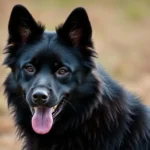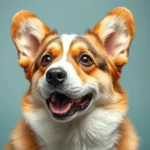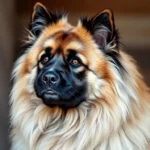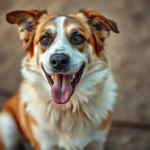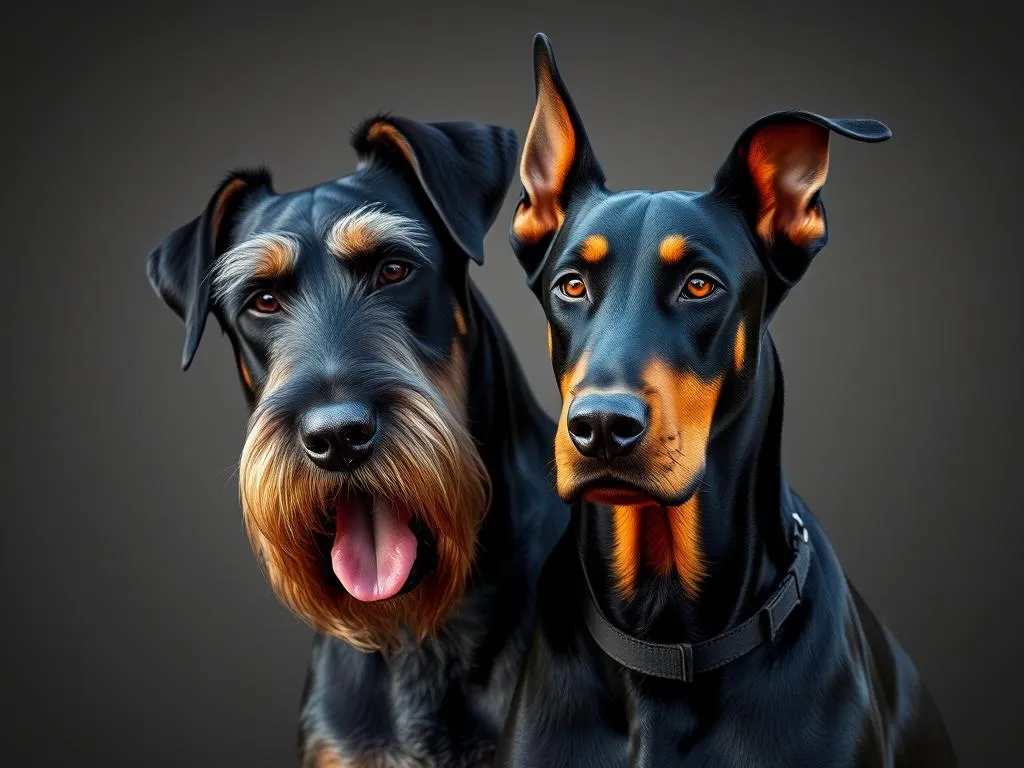
Choosing the right dog breed is a significant decision that can shape your life for years to come. Among the many breeds available, Giant Schnauzers and Dobermans stand out as popular options. Both breeds are known for their loyalty, intelligence, and protective nature, making them excellent companions. In this article, we will delve into a detailed comparison of these two breeds to assist potential dog owners in making an informed choice.
Breed Overview
Giant Schnauzer
Originating in Germany, the Giant Schnauzer was bred as a versatile working dog, primarily used for herding and guarding livestock. They are the largest of the Schnauzer breeds, distinguished by their robust build and distinctive beard and eyebrows.
General Characteristics:
– Size: Giant Schnauzers typically stand between 23 to 28 inches tall.
– Weight: They usually weigh between 55 to 85 pounds.
– Appearance: They have a dense, wiry coat that is usually black or salt-and-pepper.
Temperament and Personality Traits:
Giant Schnauzers are known for their strong-willed nature. They are intelligent, alert, and protective of their families, making them excellent guard dogs. However, they require consistent training and socialization to ensure they are well-adjusted and friendly.
Doberman
The Doberman, originally bred in Germany for protection and as a tax collector’s companion, is admired for its athleticism and loyalty. This breed has gained popularity as a family pet and a working dog in various fields, including law enforcement and search and rescue.
General Characteristics:
– Size: Dobermans typically stand between 24 to 28 inches tall.
– Weight: Their weight ranges from 60 to 100 pounds.
– Appearance: Dobermans have a sleek, muscular build and a short coat that is often black and tan, though other color variations exist.
Temperament and Personality Traits:
Dobermans are known for their loyalty and protective instincts. They are intelligent, eager to please, and require mental stimulation and exercise to thrive. Early socialization and training are crucial to ensure they develop into well-mannered companions.
Physical Characteristics
Size and Weight
When comparing the Giant Schnauzer vs Doberman, size and weight are significant factors.
| Breed | Height (inches) | Weight (pounds) |
|---|---|---|
| Giant Schnauzer | 23 – 28 | 55 – 85 |
| Doberman | 24 – 28 | 60 – 100 |
Both breeds exhibit similar height ranges, but Dobermans tend to be heavier, especially at the upper end of their weight range. This difference may influence the space required for each breed, especially in a home environment.
Coat and Grooming Needs
The coats of these two breeds also differ significantly:
- Giant Schnauzer: They have a dense, double coat that requires regular grooming. Expect to groom them at least once a week to prevent matting and manage shedding.
- Doberman: Their short, smooth coat is relatively low-maintenance, requiring only occasional brushing. They shed moderately, so regular brushing helps minimize loose hair around the home.
Lifespan
The average lifespan for both breeds is somewhat similar, ranging from 10 to 15 years depending on health and care. However, each breed faces different health issues that may influence longevity:
- Common Health Issues for Giant Schnauzers: Hip dysplasia, certain cancers, and autoimmune disorders.
- Common Health Issues for Dobermans: Dilated cardiomyopathy, von Willebrand disease, and hip dysplasia.
Temperament and Behavior
Energy Levels
Both breeds are high-energy and require regular exercise to stay healthy and happy.
- Giant Schnauzers: They thrive on physical activity and mental challenges, requiring at least 1 to 2 hours of exercise daily. Activities can include walking, running, or engaging in dog sports.
- Dobermans: Dobermans also need 1 to 2 hours of exercise each day. They enjoy activities like agility training, fetch, and long walks.
Trainability
Both the Giant Schnauzer and Doberman are highly intelligent breeds, making them relatively easy to train. However, their strong-willed nature can sometimes pose challenges.
- Giant Schnauzer: They respond well to positive reinforcement but can be stubborn. Consistency and patience are key in training.
- Doberman: Dobermans are eager to please, making them highly trainable. They thrive on positive reinforcement and enjoy learning new commands and tricks.
Socialization and Interaction with Families
Socialization is crucial for both breeds to ensure they are well-adjusted and comfortable around other people and pets.
- Giant Schnauzers: They are generally good with children if socialized early. They can be wary of strangers, making early exposure to various environments and people essential.
- Dobermans: Dobermans are known to be affectionate with their families, including children. They can be protective, so early socialization is vital to ensure they are friendly and confident.
Health Considerations
Common Health Issues
Understanding potential health problems associated with each breed can help you prepare for responsible pet ownership.
- Giant Schnauzers:
- Hip Dysplasia: A genetic condition affecting the hip joint, leading to arthritis.
-
Certain Cancers: They may be predisposed to certain types of cancer, such as lymphoma.
-
Dobermans:
- Dilated Cardiomyopathy: A heart condition that can lead to sudden cardiac death.
- Von Willebrand Disease: A bleeding disorder that affects blood clotting.
Preventative Care
Regular veterinary check-ups and vaccinations are essential for both breeds. A balanced diet, routine exercise, and preventive care can help mitigate some health risks.
Living Environment and Suitability
Ideal Living Conditions
Both breeds can adapt to various living environments, but each has specific needs:
- Giant Schnauzers: They thrive in homes with yards where they can run and play. They can adapt to apartment living if given adequate exercise.
- Dobermans: Dobermans are also suitable for both apartment and house living, provided they receive regular exercise and mental stimulation.
Compatibility with Owners’ Lifestyles
When considering a Giant Schnauzer vs Doberman, it’s essential to analyze lifestyle compatibility:
- Active Individuals: Both breeds do well with active individuals who can provide regular exercise and mental challenges.
- Families: Dobermans may be better suited for families with children, given their affectionate nature. Giant Schnauzers require more training to ensure they are comfortable around kids and strangers.
Cost of Ownership
Initial Purchase Price
The cost of acquiring a puppy can vary significantly based on breeder reputation and location:
- Giant Schnauzer: Puppies typically range from $1,000 to $2,500.
- Doberman: Doberman puppies generally cost between $1,500 and $3,000.
Ongoing Costs
Ongoing expenses for both breeds can include:
- Food: High-quality dog food can cost anywhere from $50 to $150 per month.
- Grooming: Expect to spend about $50 to $100 for grooming services for Giant Schnauzers, while Dobermans may only require $30 to $60.
- Veterinary Care: Regular check-ups and vaccinations can average $300 to $600 annually for both breeds.
Conclusion
In the battle of Giant Schnauzer vs Doberman, both breeds offer unique qualities that can make them excellent companions. Giant Schnauzers are known for their loyalty and protective nature, while Dobermans are affectionate and eager to please.
Ultimately, the choice between a Giant Schnauzer and a Doberman should be based on your lifestyle, preferences, and ability to meet each breed’s needs. Always consider responsible breeding practices and the option of adoption when searching for your new furry friend.
Frequently Asked Questions (FAQ)
Are Giant Schnauzers good with kids?
Yes, Giant Schnauzers can be good with children if socialized early, but supervision is essential.
Do Dobermans require a lot of exercise?
Yes, Dobermans are high-energy dogs that require at least 1 to 2 hours of exercise daily.
What’s the grooming requirement for Giant Schnauzers?
Giant Schnauzers need regular grooming, ideally once a week, to prevent matting and manage shedding.
Are Dobermans protective?
Yes, Dobermans are naturally protective and can be wary of strangers, making early socialization important.
Both breeds can make wonderful companions for the right owner, so take your time to consider which one fits your lifestyle best.



